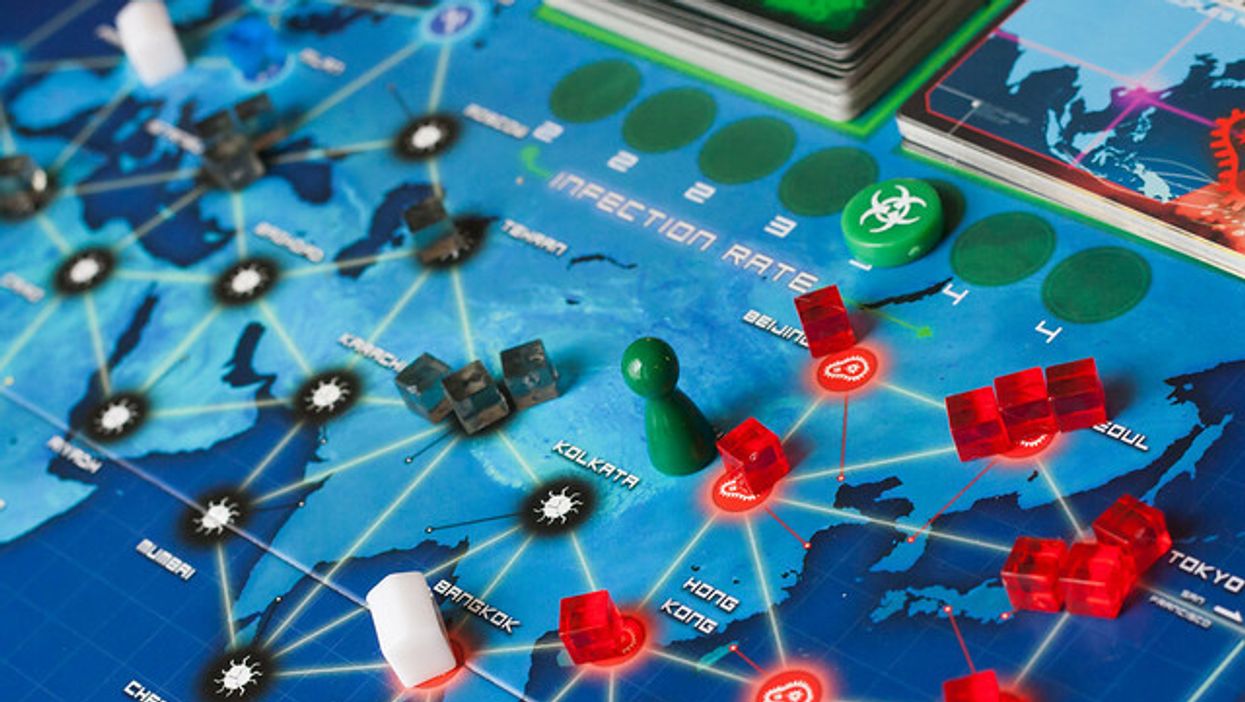Is This Pearl Harbor — Or War Of The Worlds?
U.S. Surgeon General Jerome Adams warned that this week of mounting death from the novel coronavirus could be "our Pearl Harbor moment." He was referring, of course, to the surprise 1941 Japanese attack on the U.S. Navy base in Honolulu, which pulled the nation into World War II.
Pearl Harbor would be a reasonable description of our awakening to the virus threat were the pandemic not identified months ago. A better comparison might be found in The War of the Worlds, the sci-fi horror story by H.G. Wells. Published in 1898, the novel depicts in detail a Martian invasion of our planet.
Even the first reports of an extraterrestrial landing in a London suburb do not shake the indifference of the ordinary folk convinced that their daily routines are inviolable.
"With infinite complacency" Wells writes, "men went to and fro over this globe about their little affairs, serene in their assurance of their empire over matter." The locals casually referred to the crashed Martian capsule as "the Thing."
This is not a war between humans. With their superior intellect, the Martians regard Earthlings in much the way Earthlings regard ants at a picnic: totally expendable and easy to crush. The space aliens demonstrate their overwhelming power through their horrible weapons of war — towering 20-story weapons of war called "tripods" throwing flames and spewing black, poisonous gas. The British army's latest firepower barely dents them.
In human v. human wars, assaulted countries can build their own weapons for counterattack. In the event of calamity, their governments can surrender (even as massacres against some populations continue). In World War II, both Germany and Japan eventually surrendered and were spared further bloodshed.
In a war with the virus world, there are no diplomatic opportunities to stop the killing. A microbe engages in no negotiations. It doesn't even make nonnegotiable demands.
Early in The War of the Worlds, some men from the town approach the Martian landing, waving a white flag. The Martians respond with a "blinding flash of light," and the men are immediately incinerated.
Pictures of the coronavirus show a ball with crownlike spikes coming out of it — an image right out of science fiction. That the virus is invisible to the naked eye makes it, in some ways, scarier than the Martian tripods. We can't know where the threat is.
This comparison of the coronavirus to invaders from outer space contains a great irony. Toward the end of the The War of the Worlds, when all seems lost for the human race, the rampaging tripods suddenly stop and collapse for no apparent reason. The Martians inside wither and die.
What happened? As Wells explains, human bacteria killed them. There were no bacteria on Mars. The moment the invaders arrived, he writes, when "they drank and fed, our microscopic allies began to work their overthrow." Evolution had produced a human species able to live peacefully with the very bacteria that toppled the Martians.
The eventual "defeat" of the coronavirus will probably come out of discoveries seeable only under a microscope. One promising approach could involve harvesting the antibodies of humans who have recovered from the disease and injecting them in others to help them fight off the virus. Antibodies are believed to protect against a return of the deadly microorganism, though a few former patients have reportedly been infected again.
Someday, humankind will triumph against the coronavirus scourge. But there will be no unconditional surrender on the USS Missouri, as marked the end of World War II. Any belief that humankind has vanquished the virus world would be highly premature.
Follow Froma Harrop on Twitter @FromaHarrop. She can be reached at fharrop@gmail.com. To find out more about Froma Harrop and read features by other Creators writers and cartoonists, visit the Creators webpage at www.creators.com.




